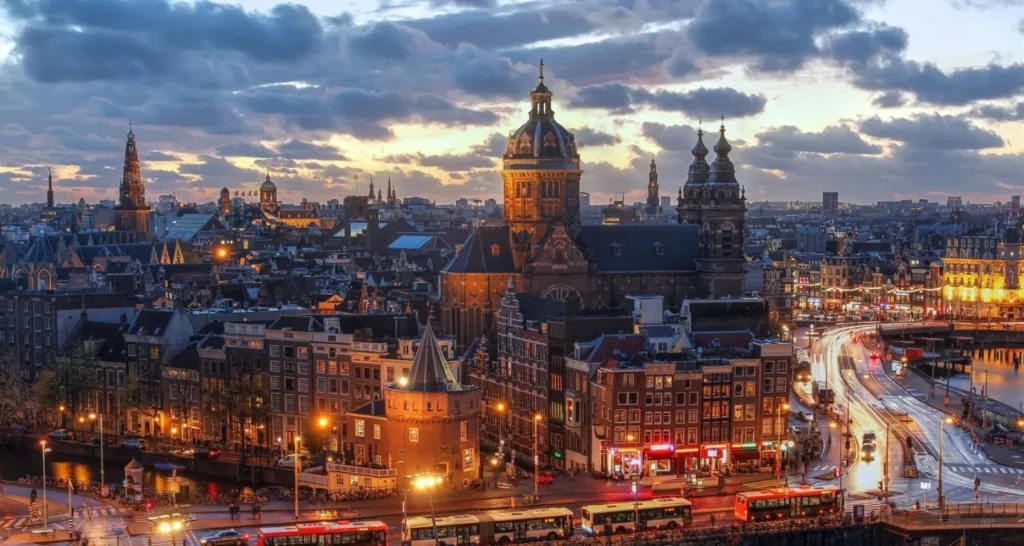Wind power plants, assembled by wind turbines, use wind as a green source of energy to generate electricity. From the historical point of view, the first turbines, windmills were used to irrigate lands and crush corn. They were first noted in the 10th century in Persia. The first commercial wind turbine was developed in 1927 by the Jacob brothers. Now, let’s have a look at these power plants, wind farms, and their features and efficiencies.
Wind Turbines and Their Basic Features
Wind turbines are towers or masts which are fixed on the ground. Its length varies from 20 to 100 meters depending on the requirements. A nacelle is on the upper part of the tower which contains an electrical generator and a gearbox. The rotor blades seen on the wind turbine hold on the nacelle via the power gear.
Due to wind, the blades start to turn which also turns the rotor. This causes the generator to turn which converts the mechanical energy into electrical energy. Since the electricity volume is smaller than the needs for commercial use – a transformer steps up the electricity before sending it to the substation. The substation increases the electricity further and then transmits it to the electrical grid.
Wind turbines can withstand wind speeds from 14 km/h to 90 km/h (nominal wind speed is 50 km/h). The total power generated by onshore wind turbines can be as much as 3 MW. There are two types of wind turbines: vertical turbines whose design makes them look like an “egg-beater” and horizontal turbines which are more common and look like a fan. Vertical turbines are not as efficient as horizontal turbines and so are not used in wind farms. Since winds are stronger offshore, Denmark, the UK, and China have established wind farms in those areas. The US does not have an offshore wind farm currently.
The efficiency of Wind Turbines
Wind energy is found to be clean and environment-friendly and is cheaper compared to other green resources. Describing the efficiency of wind power plants we have to consider o lot of factors. Firstly, the wind is an irregular source of energy because it is not always available. Secondly, the position of the wind turbines and their capture of the maximum amount of wind. Thirdly, the input for wind turbines is free but manufacturing and installing the infrastructure is costly.
Wind farms backing-up the risks using lightning protection systems and brakes in cases of lightning or extreme winds. These turbines can last for around 20 years which compensates for the higher cost of production. When compared to non-renewable and other renewable plants, wind turbines convert almost 45% of the wind energy into electricity. American Wind Energy Association (AWEA) has specified that if the Midwestern United States is considered, wind turbines should be able to operate from 65% to 90% collectively.
Automation Trends in Wind Energy
As the wind is intermittent, integrating automation into wind turbines would improve production and efficiency. Automation processes include Supervisory Control And Data Acquisition (SCADA), Programmable Logic Controller (PLC), Human Machine Interface (HMI) and Condition Monitoring System (CMS). This computer-based software help in detecting possible as well as current failures. They also allow users to control the turbine off-site and help in converting most of the wind energy to electricity. Using these measures, wind farms become more efficient and safe. According to Technavio, three automation trends will shape the wind market by 2020:
- The offshore wind market will expand abruptly.
- Wind energy tends will increase.
- Technology research investment will also increase to a greater extent.
Success and Controversies of using Windpower
Wind energy is completely green and produces no greenhouse gases. Still, there are some concerns regarding the construction and operation of wind turbines. For instance, noise that produces lades or wind turbines that destroy scenic landscapes. More importantly, birds and bats have died as a result of wind farms.
However, critics have taken its hold with the National Air Traffic Controllers Association claiming the turbines would create a protentional danger for the airplanes. Even the fishing community has stated that wind turbines will disrupt aquatic life by facing the towers in the sea bed.
Engineers have altered the design of the blades to minimize noise and make them more visible to birds. Recently, Denmark successfully produced 216,000 kWh of energy in 24 hours. The offshore wind turbine used is almost 721 feet tall and each of its blades weighs 35 tons.
According to Global Wind Energy Outlook, the wind energy sector employs 1.2 million people by 2020 and increase up to 1.7 million by 2030. In 1996, the global installed wind capacity was around 6,000 MW and it increased up to 282,430 MW in 2012. Hence, wind energy has a long way to go but when compared to fossil fuels and other non-renewable sources, it is still preserving the environment.













